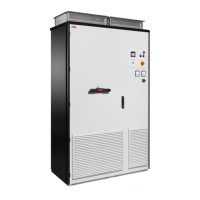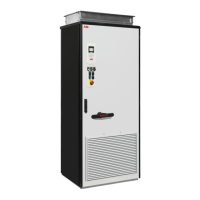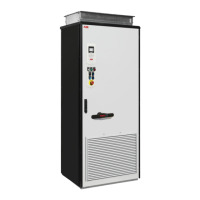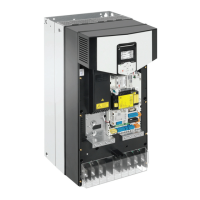■ Separate control cable ducts
Put 24 V DC and 230 V AC (120 V AC) control cables in separate ducts, unless the
24 V DC cable is insulated for 230 V AC (120 V AC) or insulated with an insulation
sleeving for 230 V AC (120 V AC).
24 V DC
230 V AC
(120 V AC)
230 V AC
(120 V AC)
24 V DC
DC voltage boost function
The drive can boost their DC link voltage. In other words, it can increase the operating
voltage of the DC link from its default value.
To take the DC voltage boost function in use:
1.
adjust the user DC voltage reference value (94.22) and
2.
select the user-defined reference (94.22) as the source for the drive DC voltage
reference (94.21).
Benefits of the DC voltage boost function are:
• possibility to supply nominal voltage to the motor even when the supply voltage of
the drive is below the motor nominal voltage level
• compensation of voltage drop due to output filter, motor cable or input supply cables
• increased motor torque in the field weakening area (ie, when the drive operates the
motor in the speed range above the motor nominal speed)
• possibility to use a motor with higher nominal voltage than the actual supply voltage
of the drive. Example: A drive that is connected to 415 V can supply 460 V to a 460 V
motor.
For more information, see ACS880-11, ACS880-31, ACS880-14, ACS880-34,
ACS880-17, ACS880-37 drives product note on DC voltage boost (3AXD50000691838
[English]).
Protecting the drive, input power cable, motor and motor
cable in short circuit situations and against thermal overload
■ Protecting the drive and the input power cable in short-circuits
Protect the drive with fuses and the input cable with fuses or a circuit breaker.
72 Guidelines for planning the electrical installation

